
14 Indoor Water-Growing Plants
Many indoor plants have the genetic ability to grow roots from plant parts that have been exposed to moisture. You can benefit from this survival adaption by using bright, transparent glass containers to cultivate and show off your loveliest plants. Not only is this style stylish, but it's also simple.

Water plants are a beautiful addition to improve the interior design of your home and are a symbol of peace, stability, and growth. Water plants give a splash of colour and charm to a previously boring area. Growing houseplants in water, is an excellent hobby for beginner, those with a limited amount of space or intolerance to filthy dirt, and those who have trouble watering their plants. This method of plant cultivation is not only minimal maintenance but also resistant to disease and pests.
A typical indoor water garden may include everything from a few water-growing plants perched on the kitchen window ledge to a variety of clippings from existing houseplants placed in bottles to cover every surface. Growing plants in water provides for greater arrangement options and can be done in almost any container that can hold water. Although growing houseplants in water may take longer than planting in soil, the indoor water garden will stay lush for a very long time.

Plant Growth in Water
Practically any container that can hold water can be used to grow an indoor water garden. As previously indicated, growing plants in bottles is a popular method, but practically any watertight container will do—with the exception of those made of copper, brass, or lead.
Once you've chosen the right container, fill it 3/4 full with gravel, pearl fragments, pebbles, sand, marbles, beads, crushed Styrofoam, or any other comparable material that appeals to your creative side.
To keep the water pure and odor-free, sprinkle in a tiny amount of powdered or small pieces of charcoal. Finally, combine a water-diluted fertiliser solution with water. It’s time to choose your plant now!

Success with water plants in 4 easy ways:
A quick, simple, and clean way to enjoy greens in your house is to make an indoor garden out of plants that grow in water. To get you started, follow these four steps:
- A plant that can grow in water should be chosen. Check out our comprehensive list of recommendations below.
- Depending on the type of plant, a fresh stem or leaf cutting is the best way to begin. You can borrow a few pieces from a friend or pick a clipping from one of your indoor plants. Most species should have multiple leaves on the cutting. Just below the node of a leaf, trim the stem. The stem is most likely to generate roots at the nodes. There should be multiple leaves, but eliminate those that would be submerged.
- Put the leaf or stem in some clean water. You can use bottled water, rainwater, or chlorinated tap water; however, the chlorine in the tap water should be allowed to dissolve for 24 hours before to usage.
- Place the container in a location with good indirect light. Stay away from areas of your house that are close to a heat source, such as a radiator, woodstove, heat pump, or fireplace.
The top 5 advantages of growing water plants
Given that they are relatively simple to develop and manage, water plants are unquestionably the ideal substitute for a sizable garden. Indoor water plant cultivation has a number of benefits, of which the top 5 are stated here.
No mess
Potted plants frequently leave soil flecks on plant supports and other surfaces. Water-based plant cultivation eliminates the requirement for routine maintenance cleanup of filthy soil.
Less attention is needed
Watering potted plants on a regular basis is a time-consuming yet necessary chore. A low-maintenance option is to grow plants in water, which takes less attention.
Lesser pests
Plants frequently produce the exceedingly nasty fungus gnats. The eggs are laid in the soil, where the larvae feed on soil fungus. Growing water based plants solves this problem.
Increase the number of plants you have inside by growing them in water
When their stems are severed and submerged in water, many tropical plants produce roots. From a single plant, you may eventually produce numerous plants
Offer beautiful displays
To improve the beauty of your home, you can display indoor plants in glasses, vases, and other containers.
14 Indoor plants that thrive in water
Spider Plant
Spider plants are exceptionally popular indoor plants valued for their arching, iridescent leaves and simplicity of maintenance. The plants produce "pups" as they develop, which can be cut off and rooted in water to create new plants. These plants are lovely and improve the appeal of any nook or space in your home. These are the greatest indoor water plants, perfect for adorning the centre table, side tables, and bare corners. Simply make sure to change the water frequently and avoid ever exposing the spider plants you are growing in water to direct sunlight.
Coleus
The greatest plant for your home if you want something colourful and low-maintenance is a coleus. These indoor plants have vibrant leaves with green, yellow, pink, red, purple, and maroon serrated borders. The amazing colours, patterns, sizes, and forms of the leaf on coleus plants make them very popular. Since coleus plants are simple to propagate and grow in water, you may raise a colony of these attractive houseplants. You can keep it as a tabletop centrepiece in a wine glass or elegant mason jar filled with water because it prefers indirect light.
Lucky bamboo
Due to Feng Shui, bamboo plants are considered lucky and are widely used. They flourish in areas of your home with indirect sunshine. The fortunate bamboo is one of the greatest water-grown indoor plants and is well known for its forgiving nature. No soil is necessary for the resilient stalks of lucky bamboo to become a live centrepiece.
Various cultures have different ideas on what water plants are. The bamboo is a symbol of wood, while the red ribbon is a symbol of fire. They convey a feeling of balance and security in all aspects of one's life. Put these into a glass container with water, decorate it beautifully with stones.
Philodendron
The heart-leaf philodendron is the most suited to growing in water of all the philodendron species. Keep a 6-inch-long cutting in a bowl or jar made of transparent glass in a spot with plenty of indirect light. It will continue to grow. It's commonly believed that this tropical vine is more difficult to destroy than to maintain alive. This resilient character is what makes it ideal for careless plant parents.
The glossy, heart-shaped leaves of the Heartleaf Philodendron have stems that can descend four feet or more. Avoid putting the plant in a cold environment because it thrives in temperatures over 70 F. Add a drop of liquid organic fertiliser to the water to feed the plant occasionally.
Begonias
Begonias thrive on shady and partially shaded decks and patios, making them a choice for summer containers. Their succulent stems and waxy leaves, which can be deep green or patterned in greens, silver, white, red, and pink, make them ideal indoor plants as well.
You can grow tuberous, wax, Angelwing, and rex begonias in water at home. Cut a stem from a wax begonia and submerge it in water. A single leaf with a stem attached creates a straightforward yet sophisticated display for tuberous, Angelwing, and rex begonias.
English Ivy
Your next plant for your indoor water garden can be English ivy. English ivy grows quickly and makes a wonderful low-maintenance indoor plant. Its cuttings can be grown for a very long time in vases. Take an ivy stem, cut off all the bottom leaves, put them in a glass jar, and enjoy it on a sunny windowsill.

Hyacinth
Scientifically called as Eichhornia Crassipes, it adds the much-needed colour to your decor. Any room is made brighter by the water hyacinth since it is vivid and looks even more appealing when combined with other plants. These plants are stunning air purifiers for your house, in addition to being beautiful. It removes harmful metals from the air, including cobalt, mercury, cadmium, and nickel.
Golden Pothos
This robust vining plant, often known as Devil’s ivy (Epipremnum aureum), has lovely heart-shaped leaves with green and yellow variegation. The stems of this plant trail downward as they grow because of its vining tendency. Use the stems' bulbous growth to your advantage by setting them in a tall vase, a wall-mounted container, or on a shelf where they can fall.
Dieffenbachia
Dieffenbachia, sometimes known as dumb cane, is a common houseplant with broad, typical variegated leaves with a silvery pattern. In addition to being stunning, it requires very little maintenance and thrives in either soil or water. Cut a six-inch section of the stem and put it in a bowl of clean water to grow in the water. When cutting Dieffenbachia stems, use gloves because the poisonous sap might cause skin irritation.
Wandering jews
These striking plants feature green leaves that resemble hearts and have purple lines. This colourful plant does well as an indoor plant and looks wonderful in vases. The greatest aspect is that you can grow them in terrariums with water and rocks. When positioned in a light location that does not get direct sunshine, these plants thrive.

Rubber Plant
Rubber plants can develop into big indoor plants with their large waxy green leaves. They can grow up to 10 feet tall when planted in a sizable pot of soil and exposed to strong light. However, they develop more slowly when grown in water. You'll need a stem cutting to get going. The ideal portion to cut should be six to eight inches long, and also any foliage on the bottom half of the cutting should be removed. Keep it in a clean container of water, out of the direct sun, and in a location with lots of indirect light. Small roots will start to appear after three to four months, at which point you may either place the plant in a container of soil or leave it to grow on its own.
Alocasia
Growing plants in beautiful glass and vases is the perfect method to display their beauty. It's simple to grow Alocasia in water, which serves to highlight the beauty of its glossy leaves. Put the plant in a location with lots of diffused light. Do not leave the vase or jar in an area where it will be exposed to sunlight for an extended period of time. The plant can also be moved such that it is close to a window so it can enjoy some early sunlight.
Arrowhead Plant
The arrowheads, which are a vibrant addition to indoor water plants, are another popular indoor water plant in India. Easy to grow, arrowhead plants are distinguished by their unusual goose foot or arrow-shaped leaves. Low to medium light levels are ideal for these plants.

Peace Lily
Peace lilies are widely used and typical indoor plants. You may cultivate peace lilies in ordinary soil and keep them in your home. However, You may have also seen individuals cultivating peace lilies in water, though. Some people decide to grow peace lilies in tiny water-filled vases. With its roots semi-permanently immersed, this aroid species develops extremely well.
The following indoor plants can also be grown in water:
Sweet potato vine (Ipomoea batatas)
Caladium
Orchid
Geranium
Impatiens
Monstera
Azolla
Instructions for caring for indoor plants with water
- Put the plants in a spotless glass or bottle.
- To get rid of mosquito larvae or algae growth, trim and care for the plants on a regular basis.
- Water should be changed every four to five days.
- Only the plant's nodes should be submerged, not the leaves or the entire plant.
- Put the plants in a spot that receives direct sunlight that is bright to moderate.
- Eliminate the withered or dead leaves.
- The water plants should be pruned or clipped with a tidy pair of sharp scissors or a knife.
- If your cutting is still developing a root system, you shouldn't be fertilising it in any way at this time. However, as time goes on, you can add a few drops of liquid houseplant fertiliser each time you change the water.
3 inventive container designs for indoor water plant cultivation
Any transparent container can be used to cultivate indoor plants. It is essential to always match the container size to the plant and switch to a larger one as the plant develops. Listed below are a creative options for water plant containers.
Vases
Vases are composed of ceramic, glass, or other materials and come in a variety of shapes, sizes, and hues. They maintain the plant upright and are leak-proof.

Test Tube
One of the most common containers for keeping indoor water plants is a set of test tubes. You can buy test tubes from a lab, a scientific supply store, or online.

Jars
Use the jars that you have hidden away in your kitchen or cellar. In India, jars make great containers for water plants that need to have their roots continually submerged.
Indoor plants can be kept in wall-mounted vases and jars because they don't need direct sunshine to grow. There are numerous shapes and sizes, including test tubes placed on wood, hanging glass globes, and wall-mounted vases.

Are you considering giving this a try? Tell us in the comments section below.
Indoor Plants
-
Original price Rs. 279.00Original price Rs. 279.00 - Original price Rs. 279.00Original price Rs. 279.00Current price Rs. 149.00Rs. 149.00 - Rs. 149.00Current price Rs. 149.00
Fittonia Small Starlight Green Plant
Plant Profile: Fittonia Small Starlight Green Plant will be your perfect indoor companion! This charming foliage plant also called the snakeskin pl...
View full detailsOriginal price Rs. 279.00Original price Rs. 279.00 - Original price Rs. 279.00Original price Rs. 279.00Current price Rs. 149.00Rs. 149.00 - Rs. 149.00Current price Rs. 149.00Sale -
Original price Rs. 249.00Original price Rs. 249.00 - Original price Rs. 249.00Original price Rs. 249.00Current price Rs. 199.00Rs. 199.00 - Rs. 199.00Current price Rs. 199.00
Peperomia Caperata Green Color Plant
Pot Size : 7 cm
Original price Rs. 249.00Original price Rs. 249.00 - Original price Rs. 249.00Original price Rs. 249.00Current price Rs. 199.00Rs. 199.00 - Rs. 199.00Current price Rs. 199.00Sale -
Original price Rs. 599.00Original price Rs. 599.00 - Original price Rs. 599.00Original price Rs. 599.00Current price Rs. 199.00Rs. 199.00 - Rs. 199.00Current price Rs. 199.00
Monstera Deliciosa Green Plant
Product Name: Monstera Deliciosa Green Plant Product Description : Pot Size: 8.5 cm Pot Plant height: 25-30 cm Images are for reference purposes...
View full detailsOriginal price Rs. 599.00Original price Rs. 599.00 - Original price Rs. 599.00Original price Rs. 599.00Current price Rs. 199.00Rs. 199.00 - Rs. 199.00Current price Rs. 199.00Sale -
Original price Rs. 399.00Original price Rs. 399.00 - Original price Rs. 399.00Original price Rs. 399.00Current price Rs. 269.00Rs. 269.00 - Rs. 269.00Current price Rs. 269.00
Calathea Rosepicta Crimson (Pink) Small Plant
For a vibrant pop of color outside the usual greens, consider the Small Calathea Roseopicta Crimson! This popular houseplant adds exquisite charm t...
View full detailsOriginal price Rs. 399.00Original price Rs. 399.00 - Original price Rs. 399.00Original price Rs. 399.00Current price Rs. 269.00Rs. 269.00 - Rs. 269.00Current price Rs. 269.00Sale -
Original price Rs. 349.00Original price Rs. 349.00 - Original price Rs. 349.00Original price Rs. 349.00Current price Rs. 249.00Rs. 249.00 - Rs. 249.00Current price Rs. 249.00
Dieffenbachia Camille Plant
Plant Profile: Our best-seller, Dieffenbachia Camille also known as Dumb Cane Camille is an easygoing plant that flaunts large, oval leaves with l...
View full detailsOriginal price Rs. 349.00Original price Rs. 349.00 - Original price Rs. 349.00Original price Rs. 349.00Current price Rs. 249.00Rs. 249.00 - Rs. 249.00Current price Rs. 249.00Sale












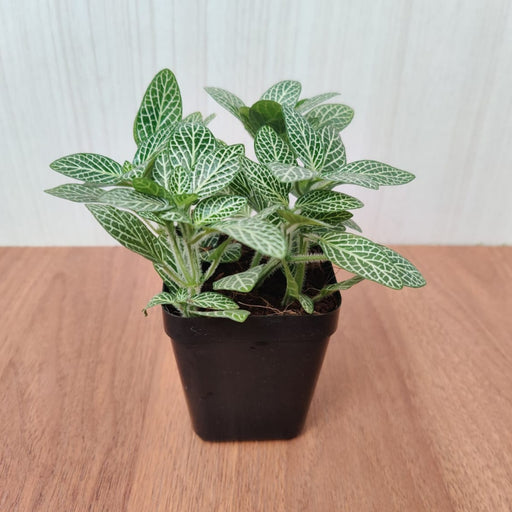
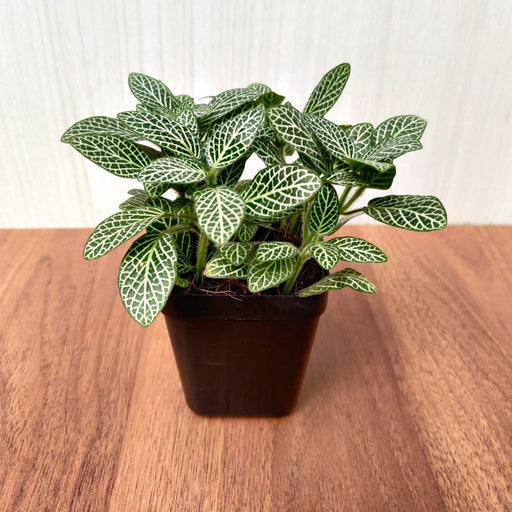
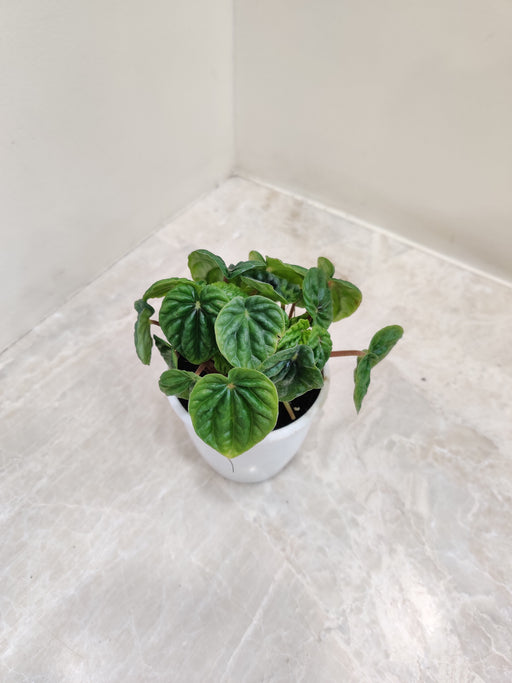
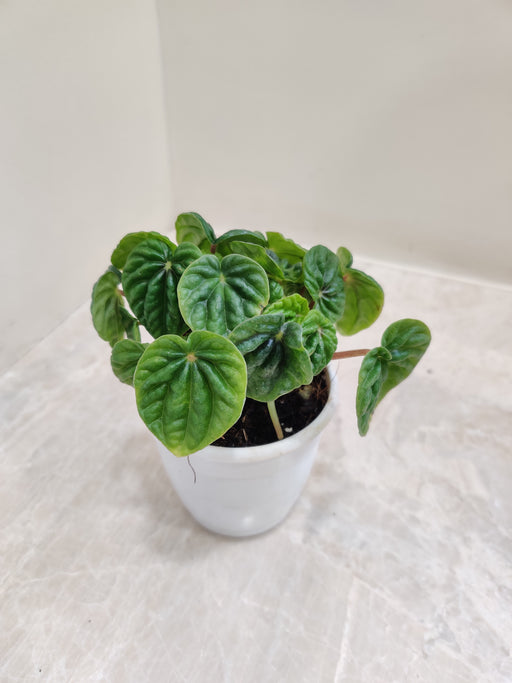


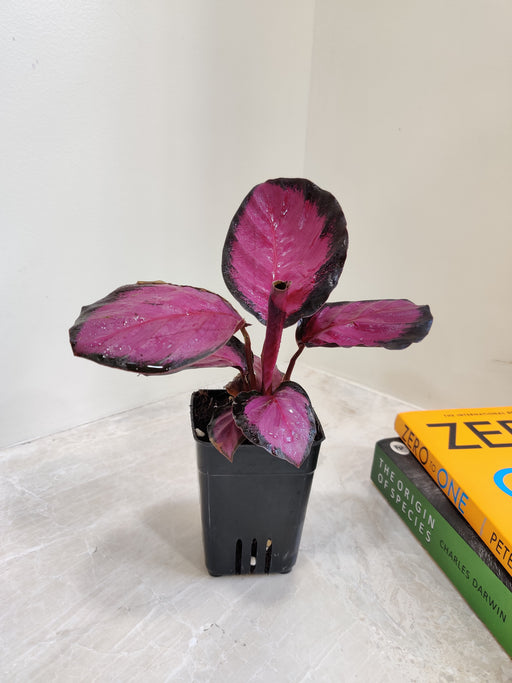
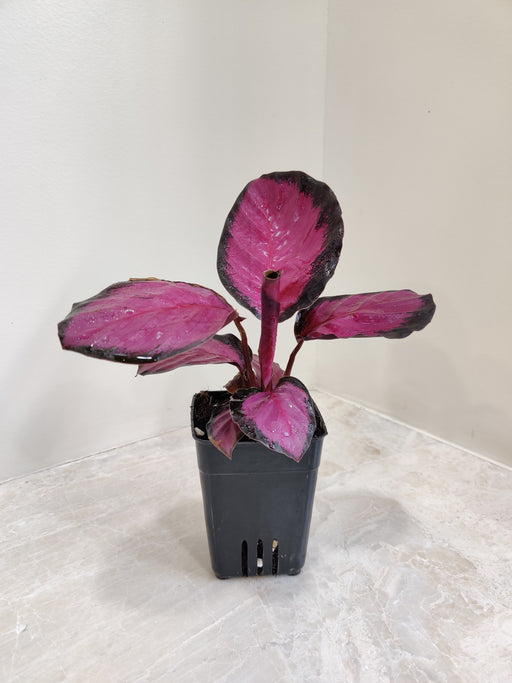
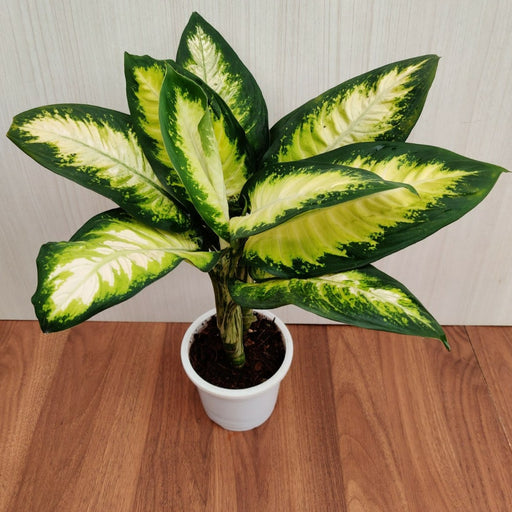
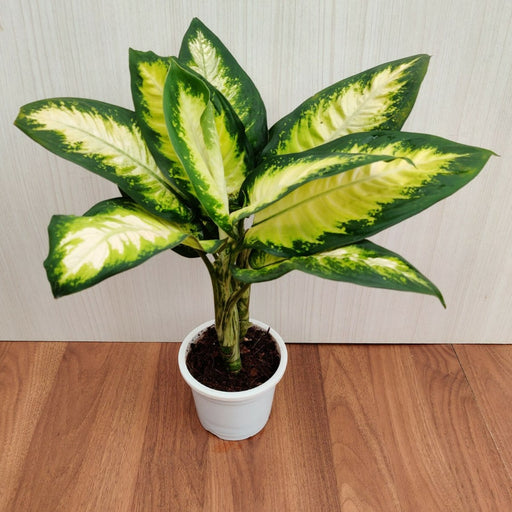
Comments
Leave a comment